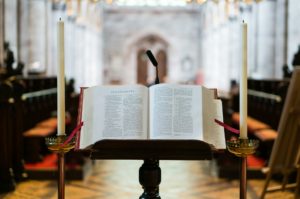I spent this morning on the south side of Chicago talking with church leaders about how to bring gospel transformation to urban communities. There is something deeply valuable about this sort of discussion across social and ethnic barriers. In my little minister circle was a businessman from Oakbrook (an affluent area), two African American pastors from the city (one male and a female), a conference speaker who specializes in women’s ministry, a parachurch ministry leader, and yours truly.
If I owned a smart phone with a camera, I would have photographed the representative of the host church–a dapper looking black pastor, dressed to the nines, standing beside the director of a suburban rescue mission whose appearance brought together a long-haired, tattooed leprechaun and Jerry Garcia from the Grateful Dead. The former prayed with his cuff-linked hands folded and head bowed. The latter had both hands raised, reaching enthusiastically toward the third heaven. The Body of Christ is indeed diverse.
Here are a few lessons that we suburbanites can learn from our urban brethren:
(1.) African American communities often don’t struggle with the the sacred/secular bifurcation that seems to plague so many of us in the burbs, at least to the same extent. This is a cultural reality. As my new pastor friend explained, "Our youth are getting shot dead in the streets. The police, community organizers, and church leaders necessarily collaborate and do so in explicit dependence upon the Lord." This creates a context in which reference to God is not only acceptable , it is the lingua franca of life.
(2.) Prayer is really important in urban ministry. I suppose this is also a truism. Where resources are lacking, people are generally more disposed to pray. The city pastor beside me was obviously a man of prayer. He spoke to God and you got the feeling that this was a regular occurrence. I can’t properly describe it except to say that it was “real.” No pretension, no religious fluff. It was, as John Henry Newman like to say cor ad cor loquitur “heart speaks to heart.” Furthermore, this commitment to prayer was also evident as our urban colleagues explained the priorities of their ministries. Prayer was stated as the conscious center around which everything revolves.
(3.) Finally, there is a certain expectation that God brings spiritual revival, a movement of the Spirit that not only enriches souls, but also reaches into the world to transform society. Now I’m familiar with the theme of revival. After all, I work at the Billy Graham Center. We have an archive dedicated to the subject. The difference, however, between me and my urban ministry brethren is at the level of imminent expectation, the awareness that the living God can step into our circumstances at any moment and radically reorder it. We know this is true of catastrophe—that a painful crisis can befall us at any moment. That’s life in a fallen world, a fact that every adult understands. Revival is the flipside. Just as we regularly stand before the prospect of disaster, we also live with the exciting prospect of transforming grace. By the way, if you’re interested in this topic, I heartily recommend a book by Collin Hansen titled A God-Sized Vision: Revival Stories that Stretch and Stir. Come Lord Jesus!!

![BLACK_PASTOR_WITH_CROSS[1] BLACK_PASTOR_WITH_CROSS[1]](http://chriscastaldo.com/wp-content/uploads/2012/06/BLACK_PASTOR_WITH_CROSS1_thumb.jpg)



